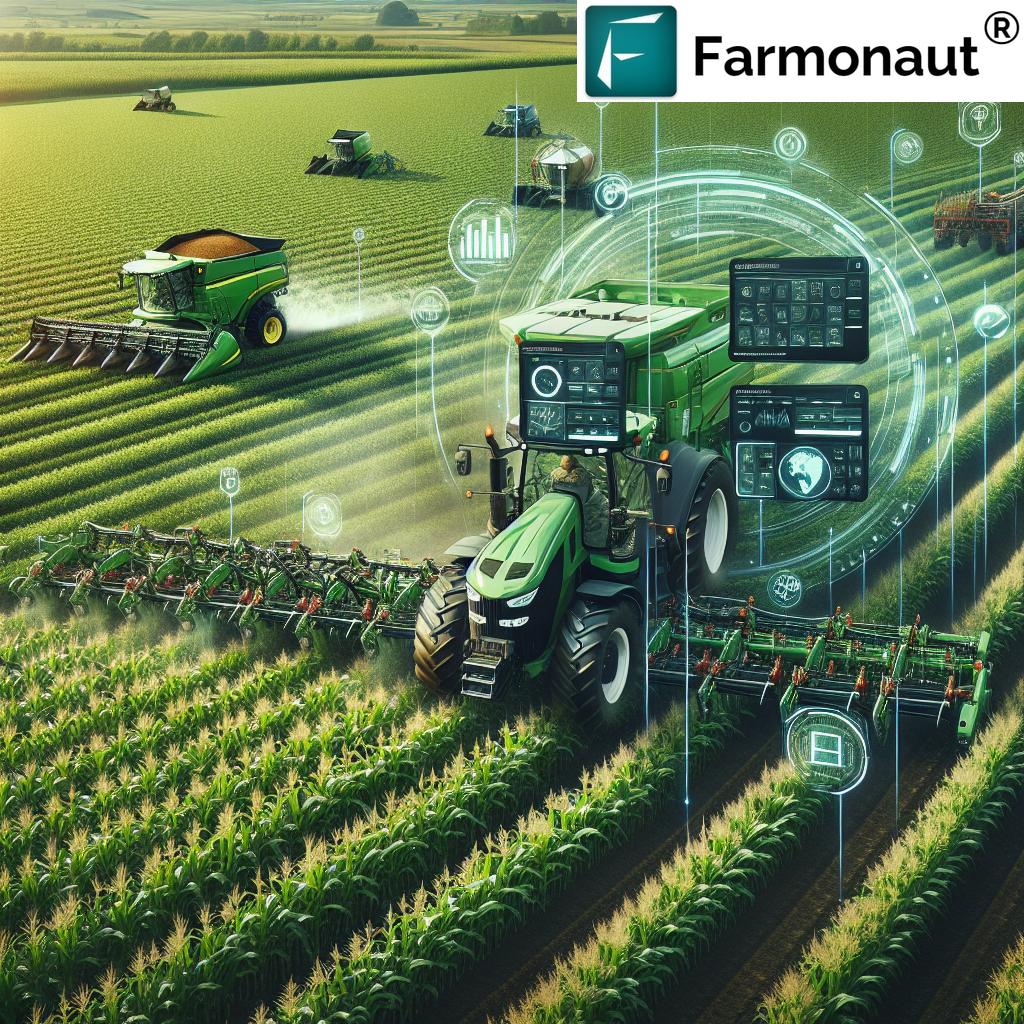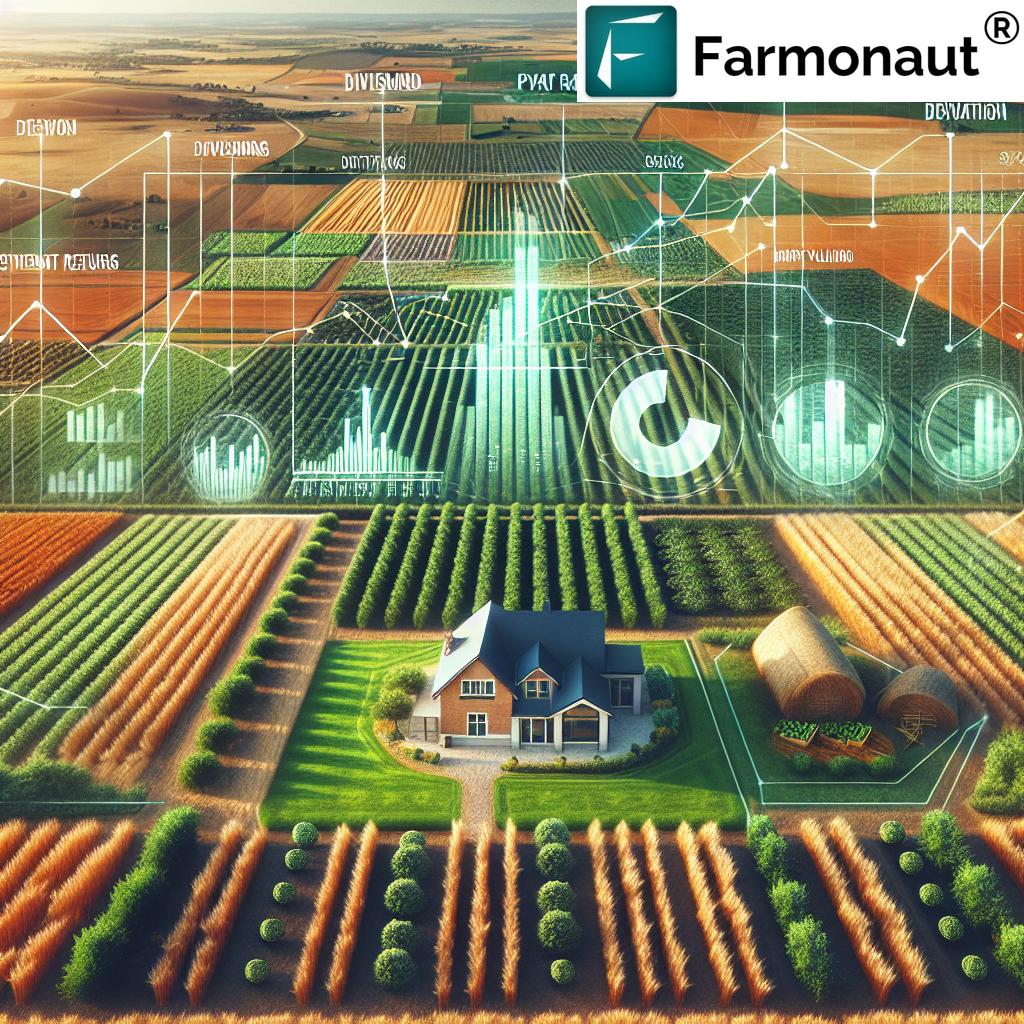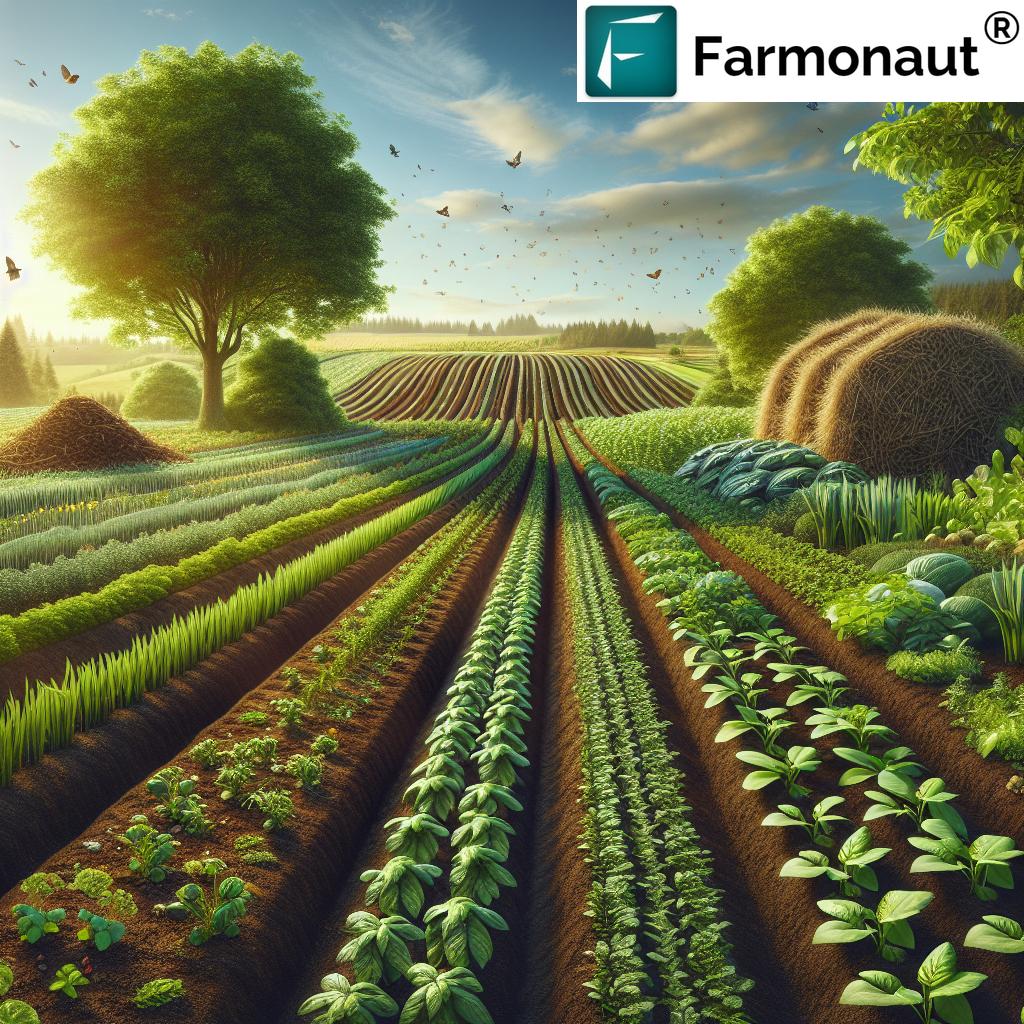Agriculture Packaging Suppliers: 7 Essential Trends for 2025
“Over 60% of agriculture packaging suppliers plan to adopt biodegradable materials by 2025.”
Introduction: The Strategic Role of Agriculture Packaging Suppliers in 2025
In 2025, the landscape of agriculture, farming, and forestry is evolving—driven by sustainability, efficiency, and advanced technology. Agriculture packaging suppliers play a vital role, moving beyond traditional containment to offer protection, preservation, marketing, and environmental stewardship of agricultural products. No longer simply about holding goods, packaging in agriculture now shapes the entire supply chain—from farm to fork.
Advances in packaging materials, sustainability initiatives, smarter supply chain logistics, and digital technologies create new benchmarks for quality and safety. This comprehensive guide dives deep into the latest trends, packaging types, eco-friendly materials, and green innovations—helping farmers, agricultural suppliers, and farming suppliers thrive in a world that increasingly values both productivity and environmental responsibility.
What is Packaging in Agriculture?
What is packaging in agriculture? It refers to the methods and materials used to contain, protect, preserve, and transport a diverse array of agricultural products—from fresh produce, seeds, and processed goods to forestry outputs like timber and seedlings. Effective packaging shields products from physical damage, contamination, pests, and environmental threats such as moisture or temperature fluctuations.
- Containment: Ensures that grains, seeds, and produce remain secure during storage and transportation.
- Preservation: Reduces spoilage and maintains quality, extending shelf life.
- Protection: Guards against physical damage, pests, and environmental factors.
- Compliance: Meets regulatory standards for food safety and quality.
In 2025, packaging in agriculture advances with a focus on sustainability, smart supply chain solutions, and improved traceability to meet increasing consumer demand for transparency and eco-conscious practices.
Importance of Agriculture Packaging
Agricultural products are often perishable and vulnerable to spoilage, damage, and contamination. This makes packaging an essential part of the supply chain. Key reasons include:
- Reducing Losses: Efficient packaging minimizes post-harvest losses and waste, especially for fruits, vegetables, and grains.
- Facilitating Storage & Transport: Easier handling through rigid crates or bulk bags ensures safe movement of products to market.
- Quality & Food Safety: Protects produce from moisture, pests, and temperature fluctuations, meeting safety standards.
- Communication: Packaging provides critical information—origin, handling instructions, certifications, and eco-labels for consumers.
- Marketing & Branding: Modern packaging designs help suppliers differentiate their products in a competitive marketplace.
Did you know? Traceability is paramount for supply chain transparency and food safety. Farmonaut’s Blockchain-Based Product Traceability solution creates secure, verifiable supply chain records for agricultural products, allowing farmers, suppliers, and consumers to access the full journey from farms to final sale.
Types of Packaging Used in Agriculture
The types of packaging used in agriculture are diverse and tailored to meet specific needs, depending on the type of product and distribution chain requirements. Here are the primary packaging types making waves in 2025:
- Plastic Films and Bags: Widely used for fruits, vegetables, and seeds. They protect against moisture and pests while allowing breathability for perishable produce.
- Boxes and Crates: Made of cardboard or wood, these provide rigid support for bulk transport.
- Biodegradable and Compostable Packaging: High on the sustainability agenda, suppliers are adopting these materials to reduce environmental impact.
- Modified Atmosphere Packaging (MAP): Controls the atmosphere inside the package to extend the shelf life of fresh produce.
- Bulk Bags and Sacks: Used primarily for grains, fertilizers, and seeds, providing durability in storage and transport.
“By 2025, eco-friendly packaging is projected to reduce agricultural plastic waste by 30%.”
Listing: Key Types of Agriculture Packaging
- Plastic Bags & Films – moisture control, for fresh and processed goods
- Corrugated Boxes and Wooden Crates – rigid protection for bulk produce and forestry products
- Biodegradable Wraps – for fertilizers, smaller bulk shipments
- Reusable Sacks – for grains, seeds, and bulk materials
- MAP Solutions – technology-driven atmospheric controls for extending shelf life
Going green in packaging? Use Farmonaut’s Carbon Footprinting tools to track your environmental impact and make smarter sustainability decisions across the supply chain.
The Role of Agriculture Packaging Suppliers
Agriculture packaging suppliers have become critical partners for farmers, agriculture suppliers, and entire forestry sectors. Beyond just selling materials, suppliers now offer customized packaging solutions that:
- Meet Regulatory Requirements: Ensure all products comply with food safety and quality standards.
- Protect Product Integrity: Maintain freshness and minimize losses caused by environmental factors.
- Advance Environmental Goals: Offer compostable, biodegradable, and recyclable packaging in line with sustainability targets.
- Enable Transparency: Provide solutions for traceability, information labeling, and origin certification.
- Drive Innovation: Integrate digital technologies like smart sensors, QR codes, and digitally enabled marketing.
Modern farming suppliers often work in tandem with packaging suppliers to optimize all touchpoints of the supply and value chain, from logistics to consumer engagement.
Streamline distribution and reduce costs with Farmonaut’s Fleet Management tools, ensuring your packaged agricultural products are delivered efficiently and sustainably across the supply chain.
7 Essential Trends from Agriculture Packaging Suppliers for 2025
As the world transitions to smarter and greener supply chains, agriculture packaging suppliers are at the forefront of a blend of innovation and sustainable practices. Here are the 7 essential trends shaping packaging in agriculture in 2025, each transforming how products are packaged, transported, and presented:
- Biodegradable & Compostable Materials
Suppliers are rapidly replacing traditional plastics with biodegradable and compostable materials to reduce carbon footprints, cut landfill waste, and support circular economy goals. - Smart Packaging Technologies
Digital advances like QR codes, RFID tags, and embedded sensors help monitor temperature, moisture, and product freshness in real-time. - Lightweight & Resource-Efficient Designs
Reducing packaging weight not only lowers transportation emissions and overall resource use but helps suppliers and farmers reach sustainability goals. - Circular Economy & Reusable Solutions
Shift toward multilayer reusable packaging, fostering reuse, recycling, and waste reduction across supply chains. - Advanced Modified Atmosphere Packaging (MAP)
Integrating MAP technologies tailored for different product types to extend shelf life and maintain quality. - Eco-Friendly Bulk & Transport Packaging
Use of biobased, recyclable bulk bags and pallet covers to minimize environmental impact during transport and storage. - Transparent & Informative Packaging
Packaging acts as a channel for clear origin, certification, and sustainability information, meeting consumer demand for traceability and authenticity.
Now, let’s compare these 7 transformative trends across factors that matter most to producers, suppliers, and the environment.
Trends Comparison Table: Key Agriculture Packaging Suppliers Innovations in 2025
| Trend Name | Description | Typical Packaging Types Impacted | Estimated Market Adoption by 2025 (%) | Key Eco-Friendly Material(s) | Environmental Benefit | Example Supplier Action |
|---|---|---|---|---|---|---|
| Biodegradable & Compostable Materials | Replaces conventional plastics with natural polymers that break down through composting or biodegradation. | Bags, wraps, films for fruits, vegetables, seeds | 62% | PLA, cellulose, starch-based plastics | Reduced landfill waste, lower microplastic pollution | Switching produce and seed bags to compostable films |
| Smart Packaging Technologies | Integrates sensors, RFID, QR codes for real-time tracking and freshness monitoring. | Fresh produce trays, bulk boxes, seed containers | 30% | – | Enhances supply chain transparency, reduces spoilage | Embedding freshness sensors in export cartons |
| Lightweight & Resource Efficient Packaging | Optimizes designs to use less material and reduce weight, preserving durability. | Boxes, crates, sacks, bulk bags | 48% | Thin-walled plastics, recycled cardboards | Lower carbon footprint in production & logistics | Redesigning grain sacks to use 30% less polymer |
| Circular Economy & Reusable Packaging | Enables multiple use cycles by encouraging reusable formats and closed-loop recycling. | Crates, pallets, seedling trays, bulk bins | 39% | HDPE, recycled polymers, wood | Reduced single-use waste, conservation of raw materials | Adopting reusable crate systems for farm-to-market logistics |
| Advance Modified Atmosphere Packaging (MAP) | Controls internal gas mix for longer product freshness and quality preservation. | Pre-packed fruits, vegetables, seed pouches | 21% | Specialized films, oxygen absorbers | Reduces spoilage, extends shelf life | Deploying MAP films for export-grade salad vegetables |
| Eco-Friendly Bulk & Transport Packaging | Uses recyclable, low-impact materials for large-volume transport and storage. | Bulk bags, sacks, pallet covers | 55% | Jute, recycled PE/PP, bio-plastics | Minimized plastic use and improved recyclability | Shifting to jute sacks for grain transport |
| Transparent & Informative Packaging | Prioritizes clear labeling, traceability codes, and visibility features. | Seed packets, produce clamshells | 45% | Paperboard, bioplastics, printed films | Strengthened consumer trust and safety | Adding QR-based traceability to seed packets |
Sustainability & Circular Economy: The Future Direction for Suppliers
Environmental priorities are top-of-mind for modern agriculture packaging suppliers. Regulatory mandates, consumer demand, and global initiatives (like the UN’s SDGs) are pushing the entire industry toward packaging that reduces waste and maximizes reuse and recyclability.
- Compostable & Biodegradable packaging figures grow as governments ban single-use plastics.
- Reusable crate pools and returnable bulk bins gain favor in large-scale farming and forestry operations.
- Circular supply chains—suppliers increasingly offer take-back and recycling services as value-added solutions.
These trends don’t stand alone—in 2025, circular packaging choices also connect with digital innovations and carbon tracking solutions.
Managing a large farming or forestry operation? Maximize efficiency with Farmonaut Large Scale Farm Management—drive productivity, monitor resources, and coordinate fleet logistics, all in one agile platform.
Farmonaut: Empowering Sustainable Agriculture Beyond Packaging
At Farmonaut, we recognize that the future of agriculture demands integrated solutions—well beyond just packaging. Our core mission is to provide advanced, accessible data-driven technologies for farmers and agribusiness worldwide, supporting both production efficiency and environmental stewardship.
- Satellite-Based Crop Health Monitoring: Our platform leverages satellite data and AI to monitor fields for vitality, moisture stress, pest outbreaks, and yield variability.
- AI Advisory Systems (Jeevn AI): Delivers real-time weather forecasting, expert crop management, and personalized input recommendations to farmers—enhancing decision making and resource efficiency.
- Blockchain Traceability: Ensures transparency across supply chains, helping consumers verify origin and authenticity of agricultural products.
- Fleet & Resource Management: Enables complete oversight over farm machinery, vehicles, and logistics—optimizing the delivery of packaged goods to processors and retailers.
- Carbon Footprinting: Allows agribusiness to monitor and mitigate their environmental impact—vital as markets and regulators increasingly require hard data on sustainability claims.
Using our solutions via the web, Android, iOS or through API integrations, farms and suppliers put actionable insights at the core of their operations.
Agriculture packaging suppliers work best when backed by real-time intelligence about produce quality, supply chain status, environmental conditions, and resource allocation. That’s why our platform was built with affordability and accessibility in mind—delivering advanced farm management tools directly to the hands of those who need them most.
Integrate Farmonaut’s data: Want to build your own digital tools or apps? Check out our API and developer documentation for seamless integration of satellite imagery, weather, and carbon footprint insights for agricultural supply chain management.
Streamlining farm finances: Lenders and insurers can now use Farmonaut’s Crop Loan & Insurance solutions for satellite-based verification—enabling finance for inputs like new-generation packaging, seeds, or mechanization needed by modern farming suppliers.
Need expert support for your forestry or plantation? Use Farmonaut Crop Plantation & Forest Advisory to maximize productivity, reduce losses, and implement sustainable packaging practices—especially for timber, seedlings, and bulk storage operations.
FAQ: Agriculture Packaging Suppliers & Sustainable Solutions
What is packaging in agriculture and why is it important?
Packaging in agriculture refers to the use of specific materials and methods to contain, protect, and preserve agricultural products (such as seeds, grains, fruits, and forestry products) during storage and transport. Importance: It prevents physical damage, contamination, and spoilage—ensuring food safety, longer shelf life, and higher product quality.
What are the main types of agriculture packaging used in 2025?
Main types include plastic films and bags (for moisture and pest protection), boxes and crates (rigid transport), biodegradable/compostable packaging, bulk sacks for grains and fertilizers, and modified atmosphere packaging for extended freshness.
How are agriculture packaging suppliers addressing sustainability?
Suppliers are increasingly adopting eco-friendly materials (bioplastics, compostables, recycled content), developing reusable solutions, improving recyclability, and leveraging circular economy models to reduce environmental impact.
What packaging innovations are expected for agriculture in the near future?
Innovations predicted for 2025 onward include smart packaging (with integrated sensors for freshness tracking), lightweight designs, reusable packaging pools, advanced MAP films, and packaging with scannable QR codes for supply chain traceability and consumer engagement.
How does digital farm management interact with packaging trends?
Digital farm management tools (like those from Farmonaut) provide real-time data on crop health, resource use, and supply chain logistics, facilitating better planning for packaging choices that reduce waste, optimize storage, and comply with emerging sustainability criteria.
Are there financial incentives for shifting to sustainable packaging?
Yes. Businesses using sustainable packaging may benefit from government grants, carbon credits, or improved access to financing—especially when supporting environmental initiatives or meeting regulatory standards. Farms can use platforms like Farmonaut’s loan and insurance verification to secure funding for such shifts.
What role does blockchain play in packaging and supply chain transparency?
Blockchain technology allows every step of the product’s journey—from farm to consumer—to be recorded and verified, enhancing trust and transparency for packaged agricultural goods.
Conclusion: Beyond Containment—The Future of Packaging in Agriculture
In 2025 and beyond, packaging in agriculture is a multifaceted, strategic force—blending protection, preservation, marketing, and above all, sustainability. As agriculture packaging suppliers, farmers, and stakeholders align on green principles, their efforts shape resilient supply chains, higher-quality products, and a healthier planet.
- Sustainability is not just a trend but a necessity embedded in modern agriculture, forestry, and supply chain operations.
- Innovation in packaging materials, technology, and designs enables suppliers to meet regulatory and consumer demands.
- Efficiency and value chain integration—from packaging solutions to Farmonaut-powered digital management—are transforming how agriculture responds to market, climate, and food security challenges.
Whether it is switching to compostable wraps, adding traceability features, or leveraging satellite data, the integrated, sustainable packaging revolution is a winning strategy for all stakeholders in the agricultural and forestry ecosystem.
Start Your Sustainable Agriculture Journey with Farmonaut
Ready to harness advanced technology for smarter agriculture and packaging solutions? Choose the Farmonaut platform that fits your needs and benefit from real-time monitoring, sustainability tracking, and comprehensive supply chain tools.
Explore Farmonaut:
Access Platform |
Large Scale Management |
Traceability |
Carbon Footprinting |
Crop Loan & Insurance
For API integration:
API Access |
API Docs












